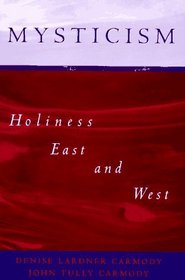Search -
Mysticism: Holiness East and West
Mysticism Holiness East and West
Author:
The particulars of a mystical experience color and shape its essence. But as Denise and John Carmody tell us, be it a Native American vision quest, or the intense soul-wrenching experience of a great storm, or a passionate love, or a dialogue in deep prayer with a personal divinity--any of these can be considered a mystical episode, if it draws ... more »
Author:
The particulars of a mystical experience color and shape its essence. But as Denise and John Carmody tell us, be it a Native American vision quest, or the intense soul-wrenching experience of a great storm, or a passionate love, or a dialogue in deep prayer with a personal divinity--any of these can be considered a mystical episode, if it draws ... more »
ISBN-13: 9780195088182
ISBN-10: 0195088182
Publication Date: 1/11/1996
Pages: 330
Rating: ?
ISBN-10: 0195088182
Publication Date: 1/11/1996
Pages: 330
Rating: ?
0 stars, based on 0 rating
Publisher: Oxford University Press
Book Type: Hardcover
Other Versions: Paperback
Members Wishing: 0
Reviews: Amazon | Write a Review
Book Type: Hardcover
Other Versions: Paperback
Members Wishing: 0
Reviews: Amazon | Write a Review
Genres:
- Religion & Spirituality >> General
- Religion & Spirituality >> Other Religions, Practices & Sacred Texts >> Mysticism
- Religion & Spirituality >> Religious Studies >> Comparative Religion
- Nonfiction >> Philosophy >> General




